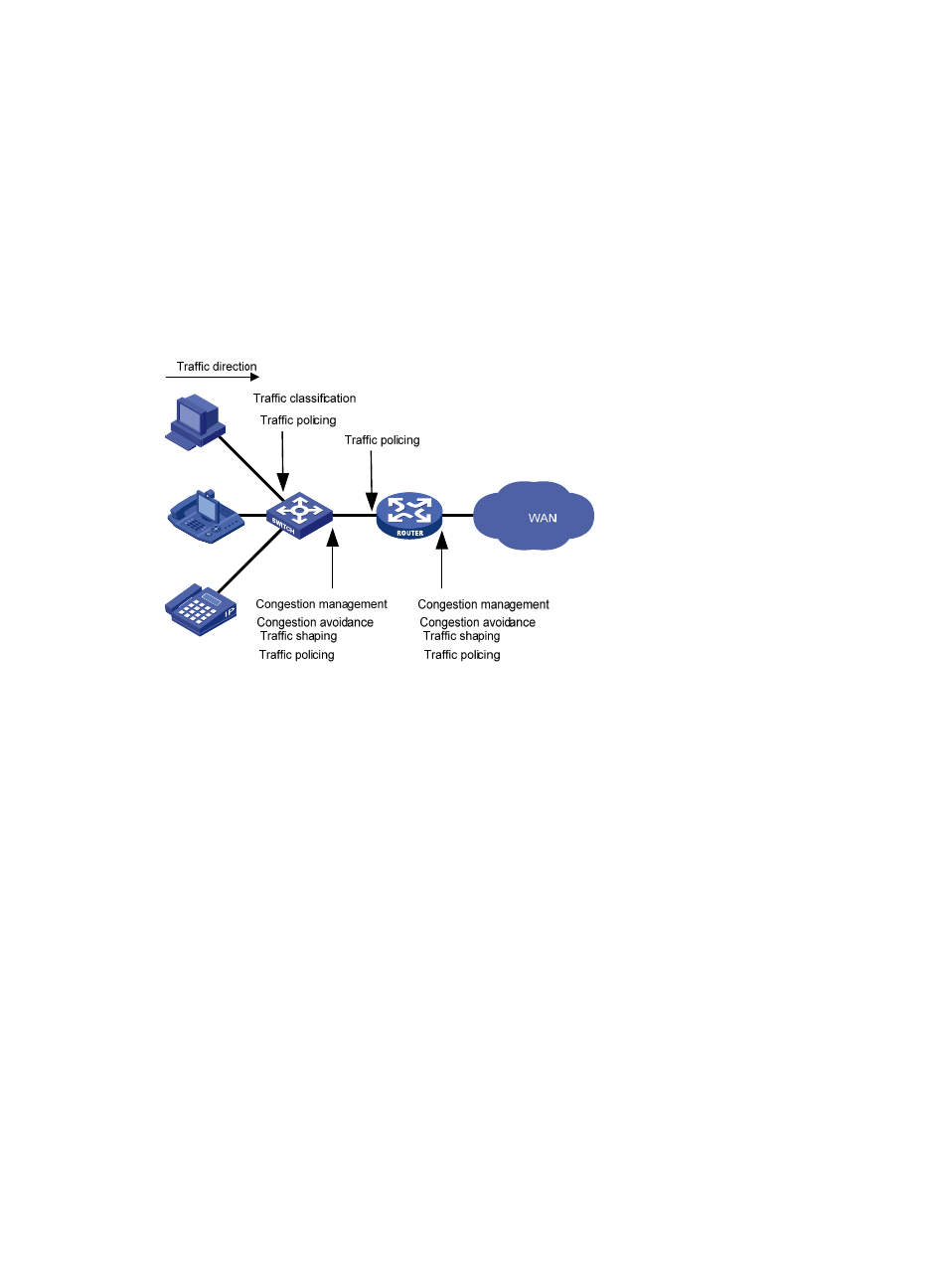Qos techniques overview, Deploying qos in a network, Qos processing flow in a device – H3C Technologies H3C S12500 Series Switches User Manual
Page 31

22
All QoS techniques in this document are based on the DiffServ model.
QoS techniques overview
The QoS techniques include traffic classification, traffic policing, traffic shaping, line rate, congestion
management, and congestion avoidance. The following sections briefly introduce these QoS techniques.
Deploying QoS in a network
Figure 3 Position of the QoS techniques in a network
As shown in
, traffic classification, traffic shaping, traffic policing, congestion management, and
congestion avoidance mainly implement the following functions:
•
Traffic classification uses certain match criteria to assign packets with the same characteristics to a
class. Based on classes, you can provide differentiated services.
•
Traffic policing polices flows entering or leaving a device, and imposes penalties on traffic flows
that exceed the pre-set threshold to prevent aggressive use of network resources. You can apply
traffic policing to both incoming and outgoing traffic of a port.
•
Traffic shaping proactively adapts the output rate of traffic to the network resources available on the
downstream device to eliminate packet drops. Traffic shaping usually applies to the outgoing traffic
of a port.
•
Congestion management provides a resource scheduling policy to determine the packet forwarding
sequence when congestion occurs. Congestion management usually applies to the outgoing traffic
of a port.
•
Congestion avoidance monitors the network resource usage, and is usually applied to the outgoing
traffic of a port. When congestion worsens, congestion avoidance reduces the queue length by
dropping packets.
QoS processing flow in a device
briefly describes how the QoS module processes traffic:
1.
Traffic classifier identifies and classifies traffic for subsequent QoS actions.
